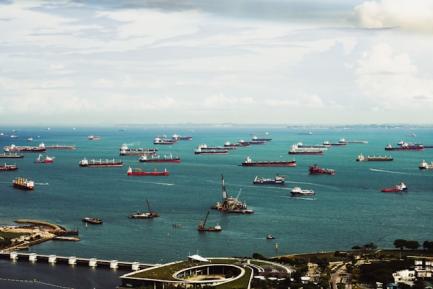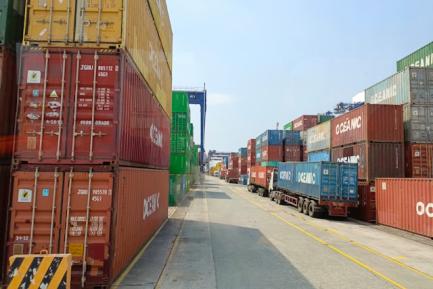Tourism: an important industry on the crest of a wave
Travel and tourism (T&T) is a key industry in the world’s economic activity in terms of its size and dynamism and also because of the effect it can have on other sectors. In size terms, the numbers speak for themselves: the sector accounted for 3.1% of the world’s GDP in 2016. This rises to 10.2% when we include the indirect and induced impacts of T&T on other sectors.1 This is a larger share than sectors as important as the motor vehicle industry, chemical manufacturing or mining. T&T also generates 9.6% of the world’s jobs, six times more than the motor vehicle industry, five more than chemical manufacturing, four more than mining and double that of communications. Expenditure by international tourists also accounted for 6.6% of global exports in 2016.
T&T is also a dynamic industry, growing at a faster rate than the global economy as a whole. International tourist arrivals to OECD and associated countries surpassed 1.1 billion in 2014 (the latest figure available), with annual growth of 6.6%. The amount they spent (excluding transport costs) increased by 4.8% in current dollars. The long-term outlook is also encouraging: the WTTC 1 estimates real average annual growth of 3.9% pa up to 2027, higher than the 3.7% forecast by the IMF for global GDP growth in the period 2017-2021. For its part, the OECD expects international tourist arrivals to reach 1.8 billion by 2030.2
Regarding the third aspect, its impact on other economic sectors, T&T presents both opportunities and challenges. Travel and tourism are investment-intensive (the sector attracted 4.4% of the world’s investment in 2016, higher than its direct impact on GDP). Other sectors in the economy can also make use of a large part of this investment (e.g. transport and communications infrastructures). But T&T produces negative externalities as well. For example, it affects the conservation of natural and cultural resources and can affect the lives of those living in tourist destinations. The emergence of new technologies and, more recently, the upsurge in the sharing economy mean that legislation needs to be adapted to handle this new situation (see the article «Tourism 2.0: opportunities and challenges» in this Dossier).
The recent boom in global T&T is due to a combination of two factors: cheaper travel, especially by air, as the sector has become more liberalised, and higher income per capita in global terms. 54% of international tourists reach their destination by plane. According to the International Civil Aviation Organisation (ICAO), between 2002 and 2012 the number of passengers grew at an annual rate of 5.8%, reaching 3 billion travellers per year. The growth in international passengers is even faster, doubling their figure (from 0.6 to 1.2 billion) with an average annual increase of 7.2%. The ICAO also expects this growth rate to remain high, predicting 2.8 billion passengers on international flights by 2030.
Regarding income per capita, empirical evidence suggests a positive correlation between the share of expenditure on T&T and GDP, since people spend money on leisure once most of their basic needs are met. For the OECD and associate countries as a whole, doubling the income per capita multiplies the share of GDP devoted to international tourism by 1.5 to 2.3 Although this tendency is affected by size, geography and cultural customs, a case in point is that of the four largest economies in the euro area. In Germany, France, Italy and Spain, the share of international T&T expenditure is 2.21%, 1.71%, 1.34% and 1.32% respectively, exactly in the same order as their income per capita. This correlation between tourism and income per capita has important implications. When world GDP increases, T&T grows via two sources: due to the economic growth per se and also because of the growth in income per capita, which increases tourism’s share of GDP.
In the short term, the advanced economies are likely to continue dominating this growth in international travel and tourism as they enjoy higher per capita incomes. And Europe has the added advantage that its geography permits land travel, as well as benefiting from the deviation of tourism from rival destinations in the Middle East due to safety concerns. The medium and long-term scenario is different, however. The emerging economies are growing more quickly than the advanced and many will achieve income levels that will allow their T&T expenditure to rocket. The OECD predicts that, by 2030-2040, international tourists will start to come mainly from the emerging economies, especially emerging Asia. The IMF forecasts 6.3% average growth for the region in the period 2017-2021, higher than the 4.9% for the emerging economies as a whole and the 1.9% for the advanced economies.4
So where does Spain fit into this scenario? Like other European countries, Spain benefits from Europe’s prime position in tourism demand and from the safety concerns of its Middle Eastern rivals. This European dominance is reflected in the composition of expenditure by international tourists according to their country of origin, where British tourists take pride of place (see the article «Tourism, a new El Dorado for the Spanish economy» in this Dossier). This composition has contributed to Spain’s tourism boom as the countries that send most tourists to Spain increased their numbers more than the average.
But this good performance by Spanish T&T is not only due to a favourable situation or composition effect. There is a correlation between foreign tourist arrivals and the competitiveness of the T&T industry of the destination country5 and Spain truly stands out in this respect. According to the World Economic Forum in 2017, Spain is once again the most competitive country in the world in T&T terms,6 in a ranking of 136 countries and ahead of France, Germany, Japan, the UK, US, Australia and Italy. The ranking’s 14 pillars are divided into four indices. Spain is very strong in natural and cultural resources as well as infrastructures, reflecting the sector’s investment intensity (see the article «Quality of tourism supply: the challenge of keeping the leadership» in this Dossier). Specifically, Spain ranks second in T&T service infrastructure (hotels, ATMs and availability of car rental services) and ninth in air transport connectivity. It is also competitive in ground transportation but lags behind France and Germany with denser networks. Spain also has an advantage over its direct rivals (France and Italy) regarding its enabling conditions for T&T. Its only weakness appears in the enabling environment index: the business environment (ease of start-ups and tax system) and the labour market (pay and productivity), where it ranks 100th.
The favourable economic situation and competitive strength of Spain’s T&T industry ensure the country can continue to take advantage of the tourism boom worldwide for some time yet. But there are also significant challenges. The sector needs to adapt to changing demand in the future and must also coordinate better with other industries. Legislation also needs to be adapted to prioritise investment in infrastructure, promoting the sector’s sustainability and ensuring a systematic development of new models of business that take advantage of new technologies.
Jordi Singla
Macroeconomics Unit, Strategic Planning and Research Department, CaixaBank
1. World Travel & Tourism Council, «Economic Impact 2017, World».
2. OECD (2016), «OECD Tourism Trends and Policies 2016».
3. The expenditure by tourists from a foreign economy (imports) as a share of that country’s GDP.
4. See the article «China and Russia, the new emerging sources of tourism» in the Dossier of MR05/2014.
5. See the article «Recipes for success in the tourism industry: different ways to reach the same destination» in the Dossier of MR05/2014.
6. World Economic Forum (2017), «The Travel & Tourism Competitiveness Report 2017».




